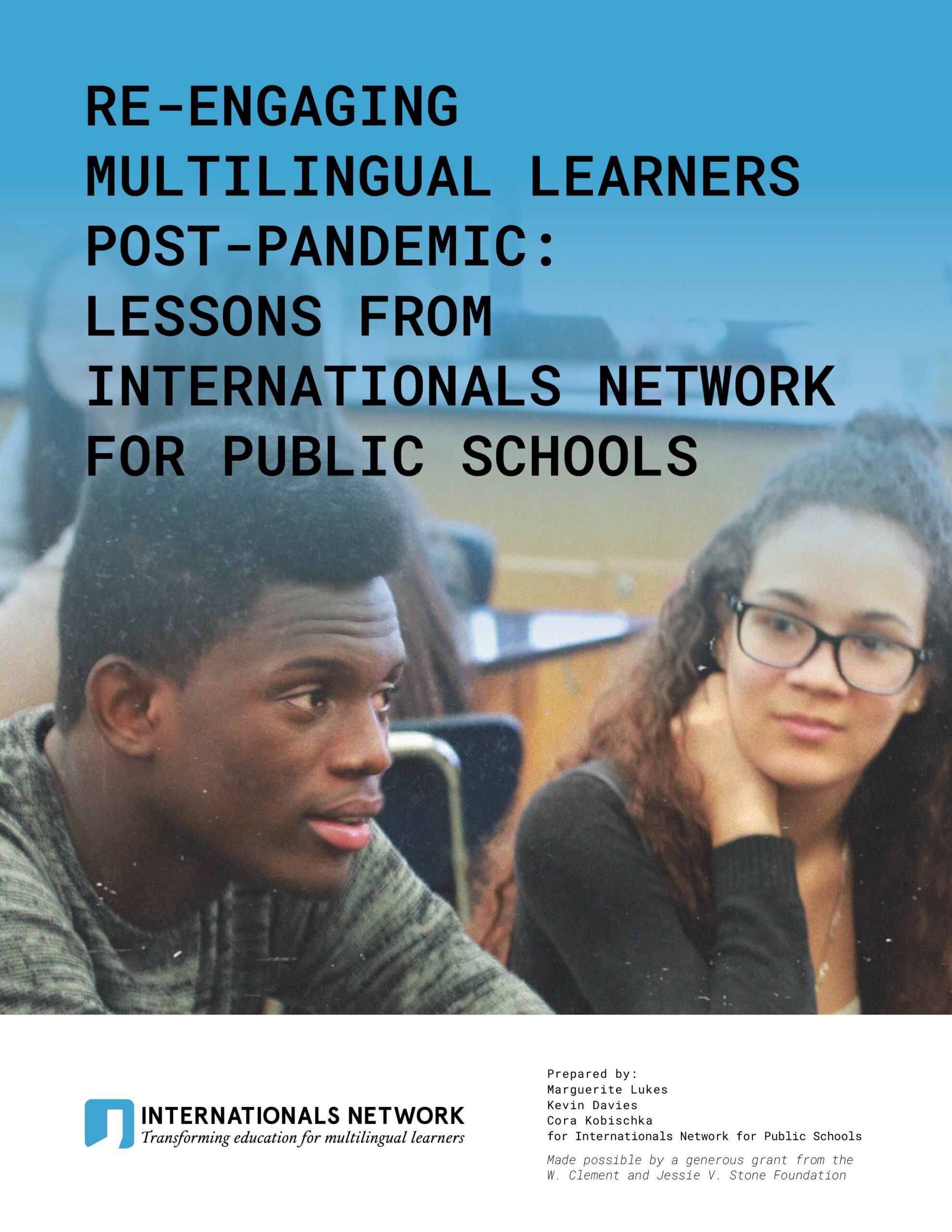Re-Engaging Multilingual Learners Post-Pandemic: Lessons from Internationals Network
The past year of COVID-19 and remote learning has highlighted inequities in our education system and the disproportionate impact on multilingual learners (MLLs). As we look to the coming school year and the return to in-person learning, how will we consider the needs of MLLs and immigrant youth? What have we learned about the impact of the pandemic and school closings on ELL students and their school communities?
Our report, “Re-Engaging Multilingual Learners Post-Pandemic: Lessons from Internationals Network for Public Schools,” is based on qualitative and quantitative data from its national network that serves over 9,500 multilingual learners in 8 districts. This report explores the academic, social-emotional, and structural impacts of COVID-19 and remote learning on MLL students and schools that serve them and details student enrollment, engagement, and achievement trends, and highlights shifts and innovations. The report also shares perspectives from students, teachers and leaders and offers recommendations to consider for reconnecting and re-engaging MLL students.
July 14, 2021
National Panel with District MLL Leaders
National Panel with District MLL Leaders:
- Mirza Sánchez-Medina, Deputy Chief Academic Officer for the Division of Multilingual Learners at the NYC Department of Education
- Lydia Acosta Stephens, the Executive Director of the Multilingual and Multicultural Education Department, Los Angeles Unified School District
- Melissa Kanney, ESOL Supervisor, Prince George’s County (MD) Public Schools
- Tom Felix, Director, Newcomer/ELL Programs, English Language Learner and Multilingual Achievement (ELLMA), Oakland Unified School District
This project is supported by a grant from the W. Clement and Jessie V. Stone Foundation
Internationals Network for Public School is the only national public school network focused on promoting equity for immigrant multilingual learners. Internationals Network designs, develops, and supports public schools and academies for recently arrived immigrant and refugee students. Our national network of 3 regional hubs comprises 28 public district schools and academies with over 9,000 students from 131 countries. Our work is grounded in over three decades of both practitioner experience and research with the goal of transforming education for multilingual learners in the United States.
